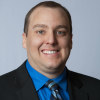Taxing bodies powerless to stop Schaumburg TIF, property tax increases
Village officials in Schaumburg are pushing for $512 million in new property taxes via a Tax Increment Financing, or TIF, district. The taxes would be used to create an entertainment district north of Woodfield Mall. But it’s not just people who pay property taxes in Schaumburg who would foot the bill. TIF districts cause property...
Village officials in Schaumburg are pushing for $512 million in new property taxes via a Tax Increment Financing, or TIF, district. The taxes would be used to create an entertainment district north of Woodfield Mall.
But it’s not just people who pay property taxes in Schaumburg who would foot the bill. TIF districts cause property taxes to rise for all other overlapping taxing districts such as Cook County, Township High School District 211, and school districts 15 and 54. This means Schaumburg’s proposed TIF district will push up property taxes in neighboring communities such as Elk Grove Village, Hoffman Estates and Palatine. And to a lesser extent it would push up property taxes all over Cook County.
Taxing bodies are expressing worry that they will be blamed for increasing property taxes on local residents.
“But as Dave Torres, associated superintendent for business in Palatine-Schaumburg High School District 211 says, they are also just one more way the local tax burden is shifted more onto homeowners.”
…
“When taxing bodies set a levy — the amount of money they want to get from property taxes — it is with the idea it will be proportionately spread among all taxpayers. But factors like TIFs cause residents to pay a disproportionate share, Torres said.”
In fact, the village of Schaumburg failed to gain significant support from the TIF district’s joint review board comprised of the overlapping taxing districts.
Only five of the 13-member joint review board voted in favor of the proposed TIF district redevelopment plan, and that includes the village of Schaumburg’s vote.
Representatives from the overlapping taxing districts of Township School District 211, Schaumburg Township Elementary District 54, Palatine Township Elementary District 15, Palatine Public Library and public member Jo Keeley voted against the proposal; representatives from Harper College and the Palatine Park District abstained, while the representative from Palatine Township was absent from the meeting.
Despite failing to gain support from two-thirds of the other members of the joint review board, the village of Schaumburg still plans to move forward with the project and is expected to pass the proposal in a January board meeting.
It shouldn’t be that way.
Normally, when a local taxing body increases property taxes, it only affects citizens within their own borders, and those citizens have the ability to elect their own leaders. But TIF districts uniquely cause property tax rates to go up in all overlapping taxing districts – and these overlapping taxing districts and their citizens having no power to stop a TIF district.
When Illinois citizens are powerless to stop TIF district property tax increases caused by authorities in a different municipality, it is taxation without representation.
Citizens who pay higher taxes because of TIF districts should have a say in whether or not a TIF district is created in the first place. Starting or expanding a TIF district should be subject to public referendum, but only after a majority of the overlapping taxing districts approve of the measure being put on the ballot.
Underneath this scenario, the proposed $512 million dollar TIF district in Schaumburg wouldn’t even appear on the ballot because it failed to gain support from a majority of the taxing districts it overlaps. And perhaps even Schaumburg’s own citizens, such as joint review board member Jo Keeley, would vote against the TIF district proposal if the question were placed on the ballot.
Statewide, TIF districts are collecting more than $1 billion annually, primarily through property taxes. TIF districts are a significant contributor to Illinois having the second-highest property tax rates in the entire country.
TIF districts are a big driver of increased property taxes in Illinois – these districts should be accountable to the citizens who pay higher taxes because of them.
